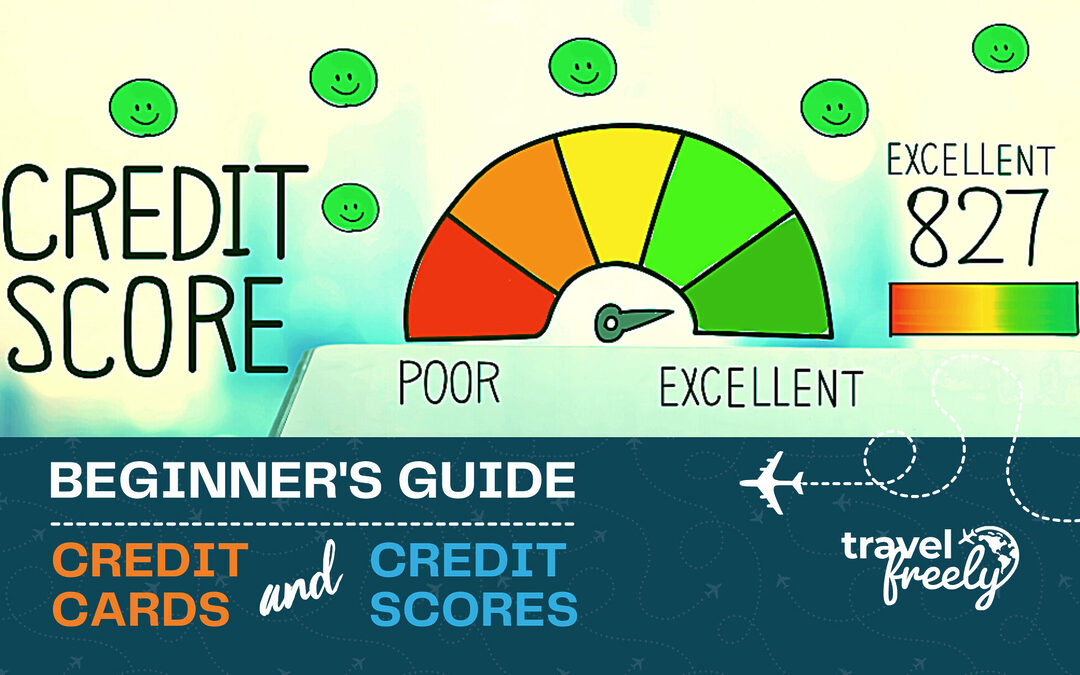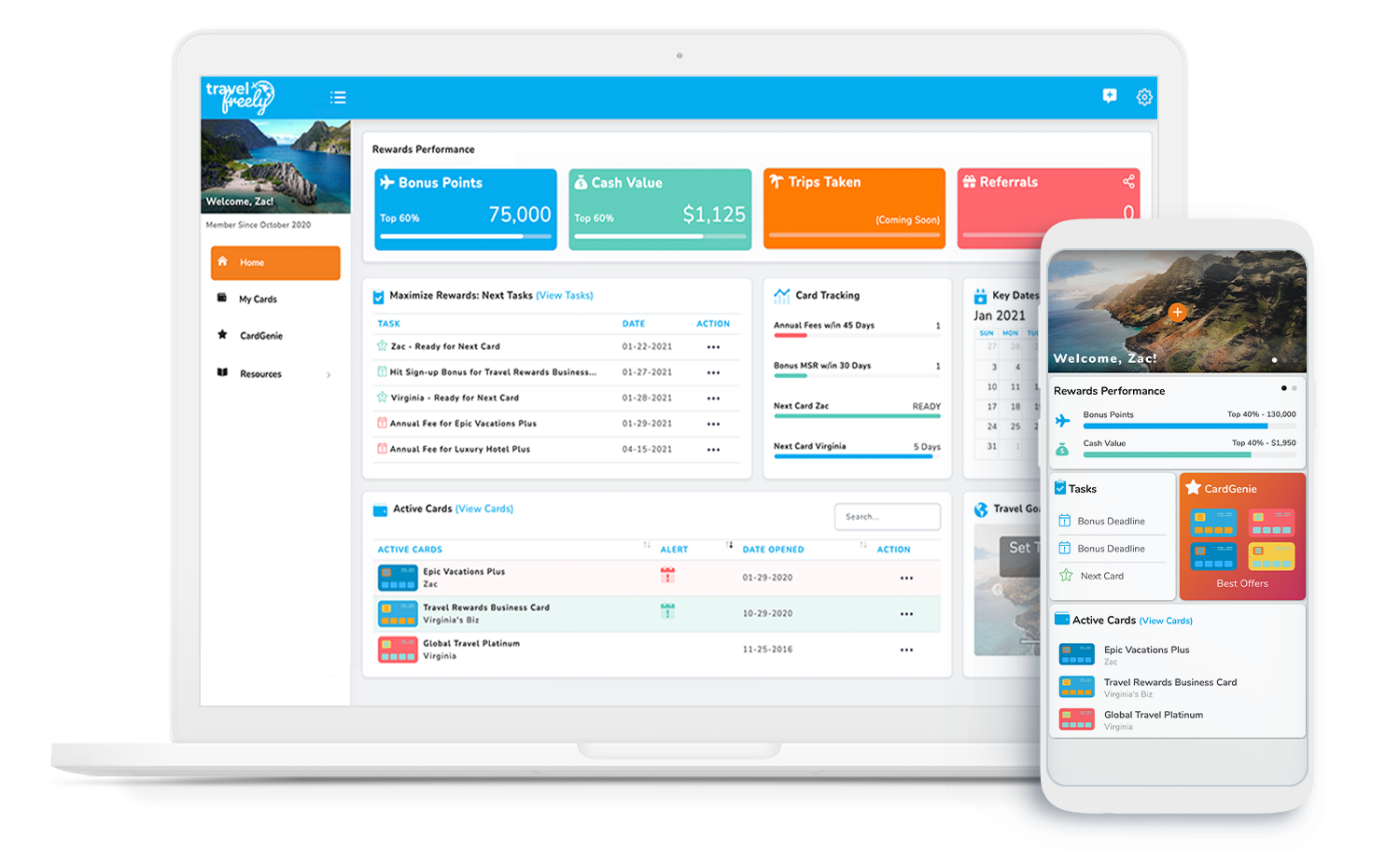This is meant as a guide for those who have very little knowledge regarding credit cards and credit scores. Read this article to learn the basics, key terms, and other important information related to credit cards and credit scores.
There are 3 Types of Credit Cards
1. Traditional Card
This is what most people know as a “regular credit card,” as seen advertised on TV. People brand new to credit may need to get a Joint or Secured card in order to start building their credit. There are some cards specifically for college students which make it easy for them to get started.
2. Joint Card
A joint card is the same in function as the traditional card, but it has a co-signer. This is used mostly when parents want to get their children a credit card for college. It is important to know that the co-signer is liable for payments; so they must be aware of the account’s standing and timely payments. Good and bad behavior with this card will affect both the co-signer and cardholder.
3. Secured Card
A secured card is the worst kind of card, but it can be the only option when someone cannot qualify —and so must build up credit—for a traditional card. The holder of a secured card must make an initial deposit which serves as the credit limit (for example, a $300 deposit will get you a $300 credit limit). After that, the card works just like a traditional credit card and unlike pre-paid or debit cards, allows you to build credit.
A quick note on debit cards. Even though they are plastic (i.e. resembling a credit card), debit cards do not let you build credit because it is processed as a cash transaction. Therefore, people using debit cards are not helping to build strong credit.
Types of Users
1. Primary Account Holder
The Primary Account Holder is the person whose name is on the account and guarantees the payment of the card balance. If there are any problems with the account, the Primary Account Holder is responsible.
2. Authorized User (or Secondary Account Holder)
An Authorized User is someone who has a card but is under the account of the Primary Account Holder. The Authorized User is not responsible for payments or balances. Adding an authorized user allows one to have multiple cards for the same account and for a spouse, trusted friend, or family member to have a card. Adding an Authorized User is a great thing to do if you are married and your spouse does not have many opened accounts. The Authorized User will benefit from on-time payments made by the Primary Account Holder.
What is a Credit Limit?
Your Credit Limit is the amount of credit you have been given each month by the credit card company. It could range from $500 – $25,000. Over time, a credit card company can raise your credit limit and this can affect your Credit Card Utilization.
What Fees Can be Involved?
Many people are nervous about credit cards because of the potential fees. There are very few types you will ever encounter; most fees can be avoided if you understand when they are incurred. Only an annual fee is ever required, and that is only for certain cards.
- Annual Fee: Not all cards come with fees, but many travel cards do. The annual fees vary between $65-95, charged each year on the date that you opened the account. The great news is that many travel cards waive annual fees for the first year.
- Foreign Transaction Fee: This fee is an additional 2-3% charged on purchases abroad or in foreign currency. However, many travel cards come with no foreign transaction fees.
- Late payment Fee: This fee is charged when you miss a payment deadline. There are ways to get these removed if you forget to make a payment. Fees can be $25-35 plus interest.
- Cash Advance Fee: Credit cards can act as ATM cards, but this is never advised due to high fees. When cash is withdrawn or a transaction is processed as a cash advance, a percentage of the cash will be charged. This is NOT advised. These fees are ridiculously high and can compound daily.
Types of Rewards
Besides spending bonuses (see below), rewards are normally earned with each purchase. Most cards are set up where $1 earns 1 point/mile, but several cards have category spending bonuses, such as 2x points on groceries.
- Points – Reward points that can then be redeemed for merchandise, gift cards or cash back.
- Miles – Frequent flyer miles or rewards points can be redeemed for travel.
- Cash Back – Some credit cards will give you 1-2% cash back on your monthly statement.
- Discounts – Some cards offer discounts for every purchase at specific stores.
Sign-Up Bonuses
Spending bonuses are normally offered as an incentive to sign-up for a certain card. The bonus usually requires a certain amount of spending (which varies with each card) in the first 3 months from when your account is opened. Many people see this as a gimmick, but if you put your monthly spending on the card and make a few large purchases, they are easy to get.
Interest Rates & Balance Transfers
An Interest Rate is the percentage rate you pay when carrying a balance. If you only make the minimum payment due on your statement, you will be carrying a balance and paying interest.
A Balance Transfer is a service offered when someone is carrying a balance on one card and wants to transfer to another card in order to get a lower interest rate.
Both of these are not advised due to the extra fees involved, not to mention your credit score will drop if you are carrying a balance. If your goal is free travel, these
two categories can be ignored.
Payment
Credit Card statements come in the mail each month just like any other bill. You can also opt to receive e-mail statements which can be easier to manage from your phone or computer.
- Statement Balance: The amount you need to pay in order to stay current with your payments and not pay interest or owe any late fees.
- Current Balance: The most up-to-date balance, which includes your previous monthly statement amount and any recent purchases since the statement period ended. You do NOT have to pay this amount to be in good standing. The recent purchases will appear on the next statement. However, if you can afford to pay early, it’s always a good idea to pay the whole balance.
- Minimum Payment Due: This will get you in trouble. This is not the minimum payment to stay in good standing, but the minimum payment required for you to carry a balance. This amount is normally $25-35. Ignore this amount and pay your statement balance each month.
How to Pay Your Credit Card Bill
In terms of payment, you have three options:
- Receive a paper statement in the mail and write a check to pay the balance
- Use the credit card’s online banking portal, make a few clicks to connect your bank account, and then make a payment online.
- Using regular mail or online banking, you can schedule an auto-pay with your card if you aren’t worried about managing your bank account balance and having enough money in the right account. Set it and forget it!
Beginner’s Guide to Credit Scores
Here are the Basics:
What is a Credit Score?
A credit score is a number between 300-850 that measures your overall “creditworthiness.” The higher your score is, the better your chances are of getting approved for loans and low interest rates. “Fair” scores range from 650-699, “Good” scores from 700-749, and “Excellent” scores from 750+. While various banks and credit bureaus have different formulas, most of them place importance on the same 6 factors. Here they are in order of importance:
6 Main Credit Factors
Derogatory Remarks – Level of Importance – HIGH
This number shows any negative marks on your credit such as foreclosures or bankruptcies. It’s safe to say that this number will be “0” if you have always been in good standing. If there is something on there, it’s important to check it out in case there is a mistake on your report.
Payment History – Level of Importance – HIGH
Payment History is a percentage of how often you are on-time with your payments. Credit card companies want to make sure they get their money, so they place high value on this information. Again, for everyone in good standing, this should be 100%.
Credit Card Utilization – Level of Importance – HIGH
Also known as CCU, this factor measures your total balances across all accounts divided by the amount of credit you have available. The point here is this: the more credit you have available to spend and do NOT spend, the more responsible and more attractive you are to credit card companies.
Therefore, this is a major factor that only gets better as you open additional accounts. For example, if I have 2 cards with $5,000 credit limit, that equals $10,000 of total credit. If I have a $1,000 balance (this is not overdue balance, just a balance from a previous monthly statement), then my CCU will be $1,000 / $10,000 = 10% CCU. Anything under 10% is considered “Excellent,” so that is why paying off cards on time and having more available credit is so important.
Age of Credit History – Level of Importance – LOW
This factor measures all of the accounts open and finds the average. It is always better the longer the history, but this is a low level factor and not as important as the previous three factors. For example, if I have 3 cards that have been opened for 5 years, 10 years, and 15 years, my Age of Credit History will be 5 years, which is considered “Fair”. Normally, this factor will not play a major role in getting approved for a credit card unless you have too many recent opened accounts.
Total Accounts – Level of Importance – LOW
This is the total number of opened and closed accounts on your report. These accounts will include mortgages and car loans. Do you know how many accounts is considered “Excellent”? 21 or more (this includes opened and closed accounts). It can also be good if you have a variety of accounts like a mortgage or car loan in your account history.
Credit Inquiries – Level of Importance – LOW
There are two types of credit inquiries, hard and soft. Hard inquiries show up on your credit report and can temporarily lower your credit score. Hard inquiries are done when you apply for credit cards, home or car loans, or any other type of credit, like cell or cable service. Soft inquiries are done by companies when trying to get you certain offers or by software like Credit Karma. These soft inquiries do NOT affect your credit score. Hard inquiries show up on your credit report as “Credit Inquiries” for up to 2 years. It is important to limit or avoid hard inquiries so that you can utilize them for credit cards. Always ask if you aren’t sure if a company will do a hard or soft inquiry.
In Summary
Banks and lenders use a credit score as a major factor when deciding whether or not to issue you lines of credit, such as a home mortgage, car loan, or credit card. Apartments, cable companies, and mobile phone providers can also take your credit score into account when making a decision on incentive offers. A credit score is of major importance in many people’s lives. For example, people have saved tens of thousands of dollars on home loans by having a high credit score.
Disclaimer: The information provided herein are for informational purposes only and are not intended as a substitute for professional advice.
Sources: www.creditkarma.com, www.investopedia.com, www.discover.com/credit-cards/resources/credit-cards-101/credit-card-journey
Related Articles:




